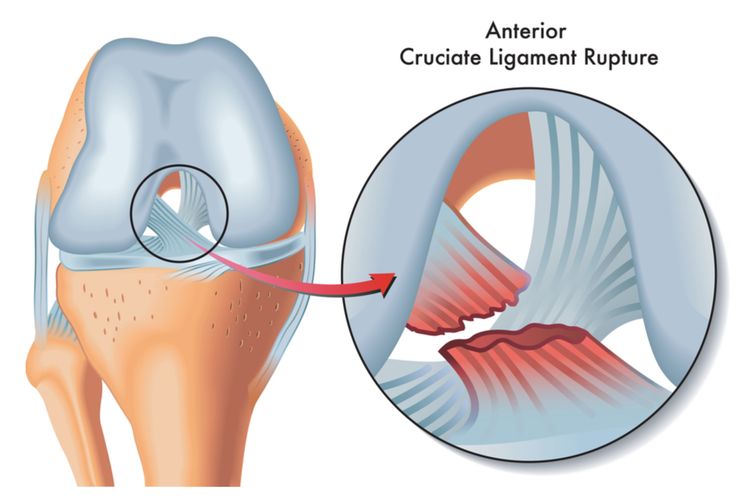Unlocking the Key to Injury Prevention in Health Care: A Comprehensive Guide to Preventing ACL Injuries

In the realm of modern healthcare, where innovation intertwines with human physiology, the pursuit of preventing ACL injuries has emerged as a paramount endeavor. The anterior cruciate ligament (ACL), a critical component of the knee joint, bears the responsibility of providing stability and facilitating seamless movement. However, the intricate biomechanics of the knee render it susceptible to injury, often resulting in distressing consequences. In this comprehensive exploration, we delve into an array of strategies that span from the scientific to the practical, all orchestrated to unlock the key to averting ACL injuries and fostering a healthier, more resilient populace.
1. Biomechanical Insights: The Foundation of Prevention
The pursuit of preventing ACL injuries begins with a profound understanding of the intricate biomechanics of the knee joint. Biomechanical studies have elucidated the pivotal role of various forces during physical activities, shedding light on the mechanisms that place stress on the ACL. Deciphering the interplay of valgus forces, rotational torques, and abrupt decelerations forms the bedrock of devising effective preventative measures.
2. Proprioceptive Training: Nurturing Neuromuscular Harmony
Proprioceptive training, an enigmatic facet of injury prevention, revolves around honing the body’s proprioceptors – sensors that relay information about joint position and movement to the brain. Engaging in proprioceptive exercises cultivates neuromuscular harmony, enhancing the body’s capacity to adapt and maintain stability. This intricate dance between the neuromuscular system and the proprioceptive senses is instrumental in averting injurious missteps that often lead to ACL injuries.
3. Biomechanical Screening: A Prelude to Prevention
The advent of sophisticated biomechanical screening technologies has revolutionized the landscape of ACL injury prevention. Utilizing motion-capture systems and predictive algorithms, clinicians can dissect movement patterns with remarkable precision. These screenings unveil aberrations that predispose individuals to ACL injuries, facilitating the formulation of tailored interventions that address underlying vulnerabilities.
4. Eccentric Strength Training: Fortifying Resilience
Eccentric strength training, an unconventional yet potent strategy, targets the lengthening phase of muscular contractions. By subjecting muscles to controlled resistance during elongation, eccentric training not only enhances muscular strength but also fortifies the tendons that envelop the knee joint. This fortification erects a formidable bulwark against the forces that precipitate ACL injuries.
5. Neuromuscular Education: A Symphony of Mind and Muscle
The orchestration of neuromuscular education transcends the realms of physicality, enlisting cognitive engagement in the pursuit of injury prevention. Through techniques like biofeedback training, individuals harness real-time data to fine-tune movement patterns. This symphony of mind and muscle not only empowers individuals with conscious control over movement but also instills a heightened awareness of injurious movement tendencies.
6. Tissue Remodeling: Nutritional and Collagenous Considerations
The journey toward preventing ACL injuries is intrinsically linked to tissue remodeling – the ongoing process of repair and rejuvenation within the body. Nurturing this process hinges on nutrition that fosters collagen synthesis. Collagen, a fibrous protein, constitutes the fundamental building block of tendons and ligaments. A diet rich in vitamin C, amino acids, and antioxidants serves as the cornerstone of tissue health, augmenting the body’s capacity to heal and endure.
7. Wearable Technology: Guardians of Movement
The digital age has bestowed upon us an arsenal of wearable technology that serves as guardians of movement. Wearable sensors, discreetly nestled within garments or attached to the body, record movement metrics with unprecedented accuracy. These unobtrusive sentinels detect movement imbalances and provide real-time feedback, empowering individuals to recalibrate their actions and avert ACL injuries.
8. Biomechanical Footwear: The Foundation of Support
The intricate biomechanics of the knee are intricately linked to the foundation provided by the feet. Biomechanical footwear, engineered with precision, functions as the vanguard against injurious forces. By promoting optimal foot positioning and cushioning, these specialized shoes harmonize the kinetic chain, transmitting supportive impulses from the ground up and thwarting injurious forces that could precipitate ACL injuries.
9. Functional Movement Patterns: Cultivating Fluidity
The narrative of preventing ACL injuries finds resonance in the realm of functional movement patterns – the seamless integration of strength and flexibility during dynamic activities. Engaging in functional movement training cultivates fluidity and coordination, enabling the body to instinctively adapt to varying demands. This adaptability diminishes the likelihood of abrupt, injurious movements that could compromise the ACL.
10. Holistic Training: The Sum of its Parts
In the holistic tapestry of ACL injury prevention, each strategy weaves its unique thread, collectively converging to fortify the intricate fabric of the knee joint. Biomechanical insights, proprioceptive training, neuromuscular education, tissue remodeling, and the gamut of innovative approaches harmonize as a symphony of preventative measures. This orchestration isn’t a mere sum of its parts but an intricate dance that elevates the capacity of the human body to transcend injurious thresholds.
In the grand tapestry of health care, the endeavor to prevent ACL injuries stands as a testament to human innovation and determination. The journey transcends the physical domain, intersecting with the cognitive, emotional, and mechanical realms. As we navigate the trajectories of prevention, the narrative unfolds as a beacon of resilience, empowerment, and the unwavering pursuit of an injury-free future.